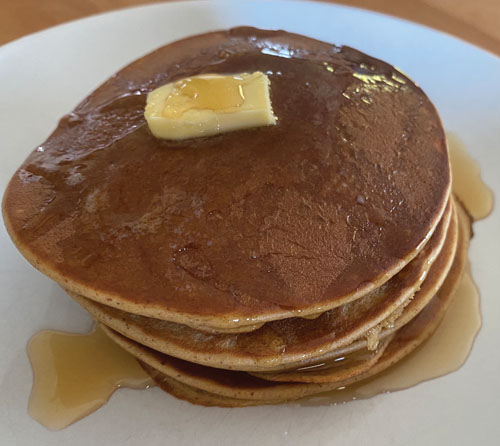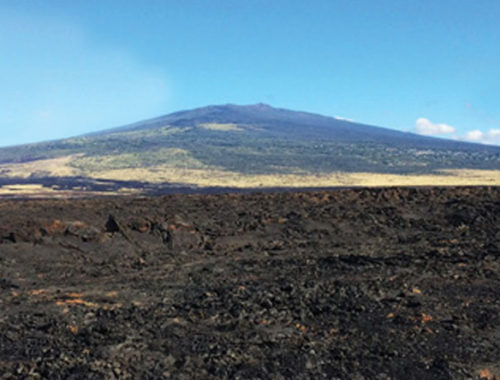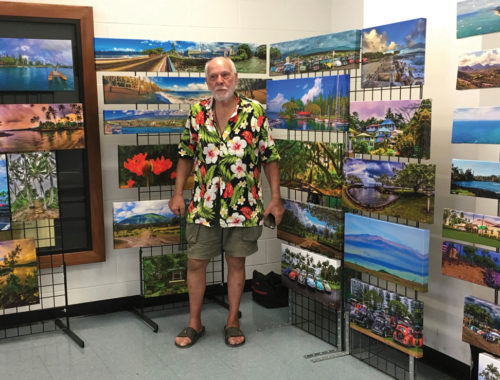
Banana-rama: A Recipe for Gluten-Free Banana Pancakes

By Brittany P. Anderson
With a loud thump, the machete slices through a thick green stalk. The upper half, now severed, leans in near slow motion until its pointed green bounty is reachable by nimble hands. Another swift cut and the rack of nearly 100 bananas is released from the plant.
Bananas traveled to Hawai‘i as a canoe plant. Early Hawaiians planted bananas along coastlines as a food source should they need to seek unexpected refuge. Some bananas have medicinal qualities, some are grown for cooking, and others are purely ornamental.
Descendants of today’s most popular fruit were grown in Malaysia in approximately 2000 BC. Alexander the Great’s army found bananas in 300 BC, and they are credited with bringing them to the west.
Estimates show there are upwards of 1,000 varieties of bananas grown worldwide. The most popular bananas produced for commercial purposes are Cavendish, but the apple banana reigns supreme in Hawai‘i.
Arriving from China in the 1860s, apple bananas are prized for their smaller size and sweet, slightly tangy flavor. Other varieties popular on Hawai‘i Island are ladyfingers, saba (a type of cooking banana), and ice cream bananas.
More closely related to grasses and palm, the banana trunk shoots up from a bulb called a corm. Once the banana bears fruit, it is chopped down, but the corm lives on producing more plants referred to as “keiki” or “suckers.” Hawai‘i Island makes up 91% of the state’s total fresh market banana sales, and as a state, we produce over four million pounds a year. The fruit isn’t the only thing used from the plant. Banana stalks contain useable fiber, and the leaves offer wrapping to steam meats and vegetables.
The banana bunchy top virus (BBTV) is threatening banana growers across the islands and abroad. BBTV is extensive in Southeast Asia, the Philippines, Taiwan, and parts of India and Africa. In Hawai‘i, BBTV was first identified in 1989 on O‘ahu. In 1995, the disease made its way to Kailua-Kona on Hawai‘i Island, and several years later was found on the island of Kaua‘i. BBTV is prolific across all islands, now dealing a severe blow to the banana industry in Hawai‘i. Work is underway to cultivate banana strains resistant to BBTV, and a few banana farmers are testing out these virus-free cultivars.
When you have too many ripe bananas, banana bread is most people’s go-to recipe. Instead, reach for this recipe for gluten-free banana pancakes. The recipe is a ratio, so you can make as little or as many as you like. Make a large batch, and you’ll have pancakes for breakfast throughout the week.
Gluten-Free Banana Pancakes

The ratio is– 1 banana:1 egg:1 Tbs almond butter, and a dash of cinnamon. (We suggest using 6 as the ratio, and 12 makes enough pancakes for the week.)
Place bananas, eggs, almond butter, and a generous dash of cinnamon in a blender or mash by hand until combined. Lightly grease a skillet and heat on medium until hot. Drop approximately 1/4 of a cup of batter on the hot skillet or the sized pancake of your choice. Cook until tiny bubbles begin to form on the top, then carefully flip the pancakes and cook on the other side 1–2 minutes or until fully cooked. Serve and enjoy!



